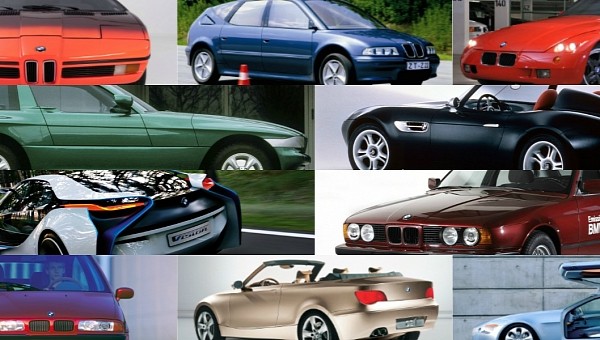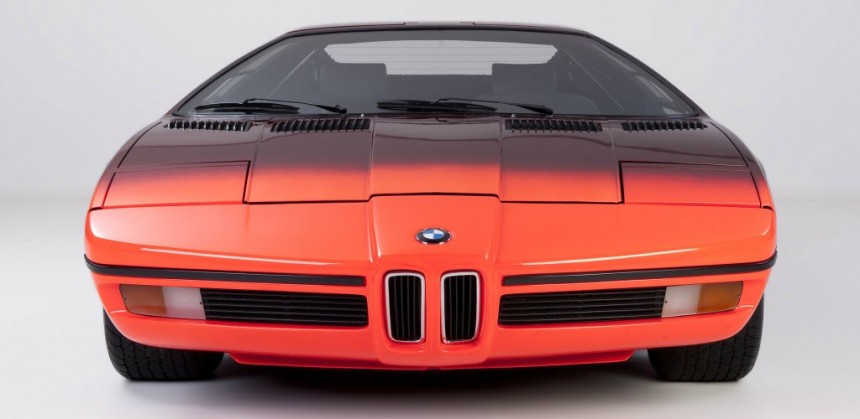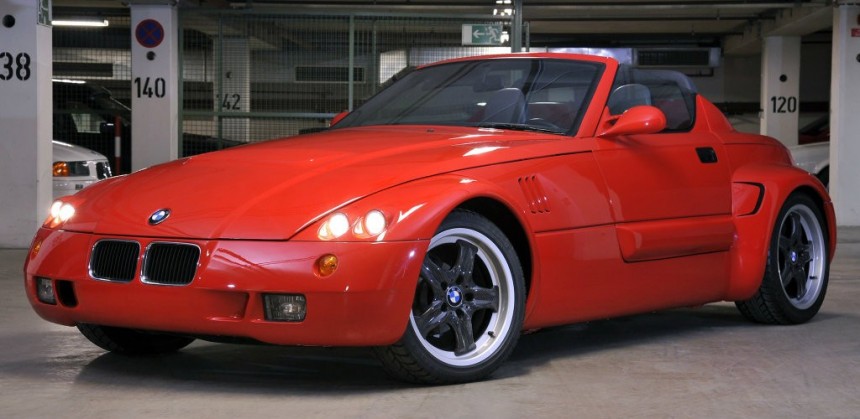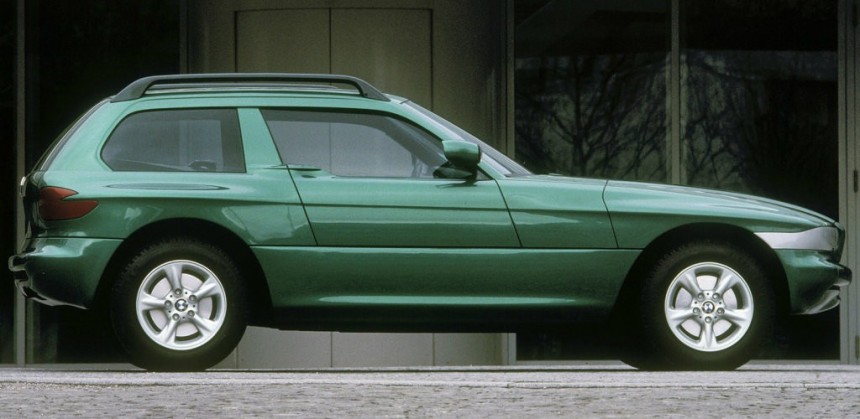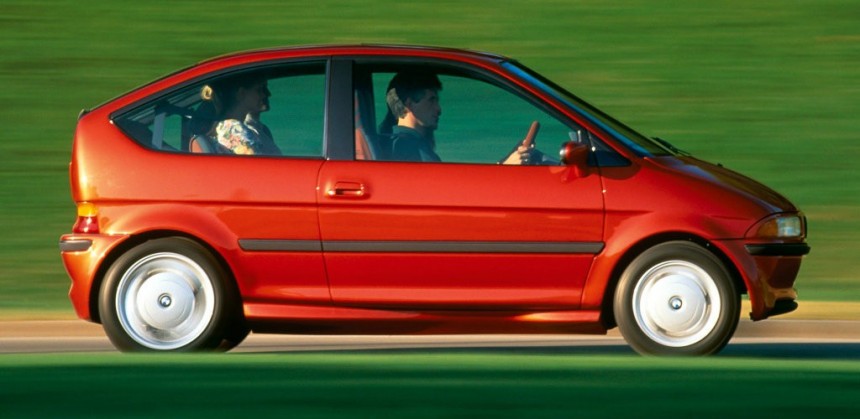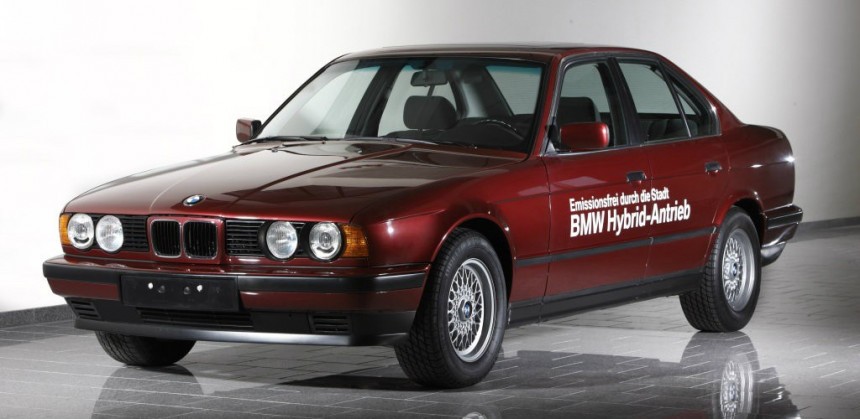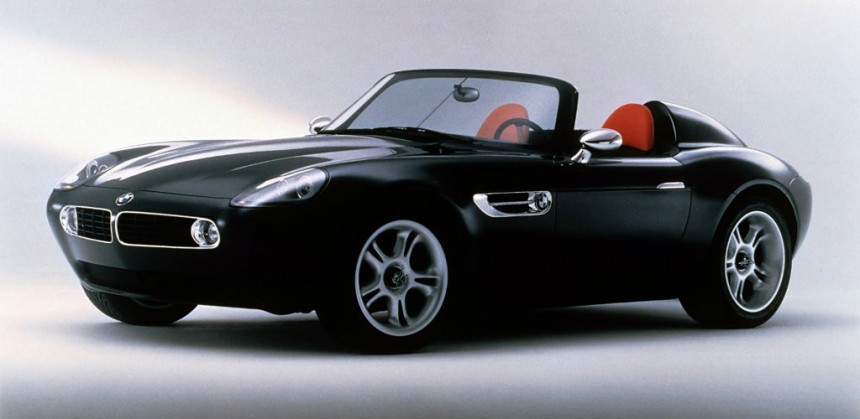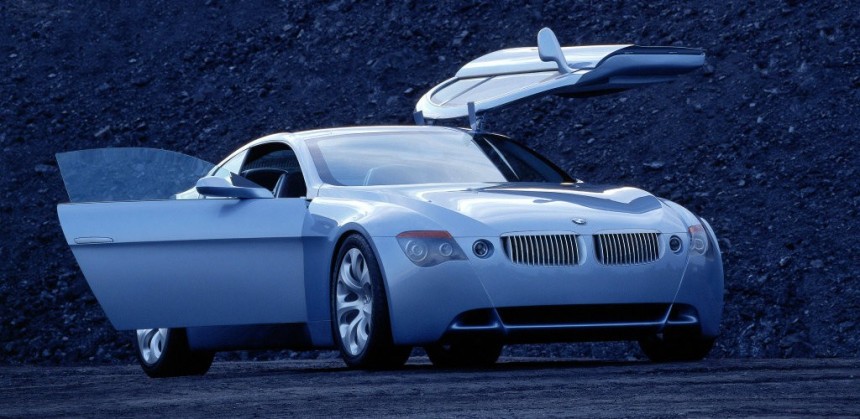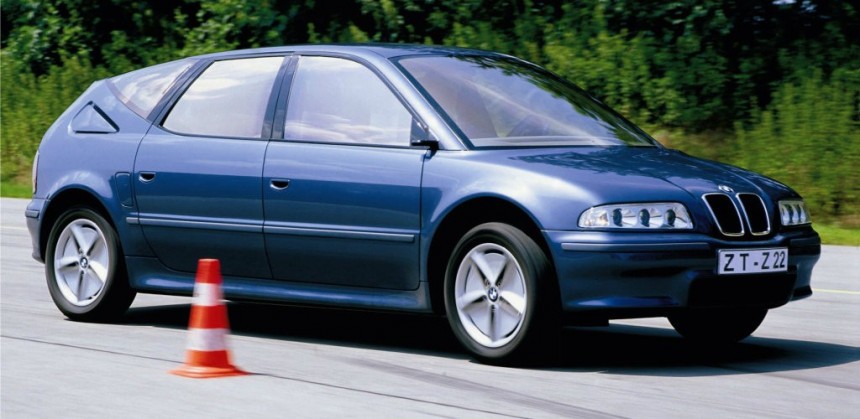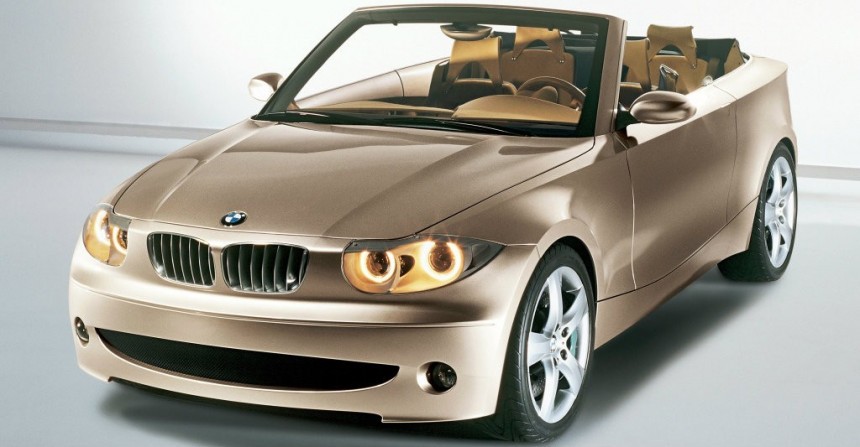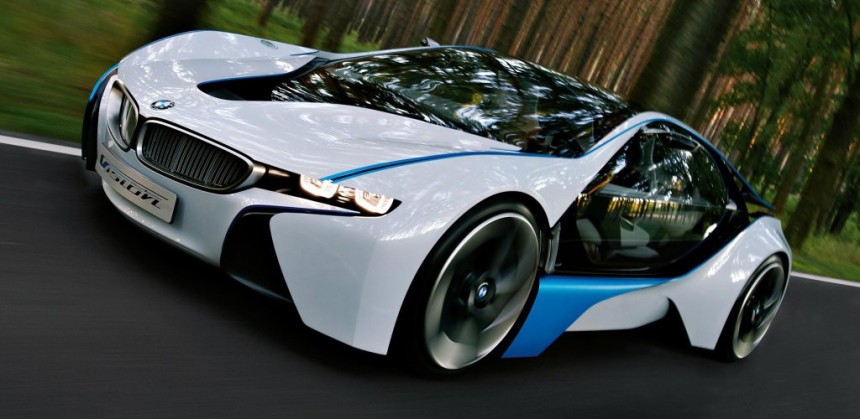Concepts are rightfully considered by many car enthusiasts as four-wheeled artworks. Grand in their aesthetic and much wilder compared to their series-production counterparts, these design studies can trace their roots back to the bite-the-back-of-your-hand pretty 1938 Buick Y-Job.
Founded at the beginning of the 20th century, German aircraft manufacturer Otto Flugmaschinenfabrik was reorganized into Bayerische Flugzeugwerke a few short years later. The switch to BMW occurred in 1922, yet Bavaria’s most beloved automaker started making automobiles in the late 1920s. BMW originally produced the Austin 7 under license.
The Great Depression wreaked havoc, allowing that mustached guy to become chancellor in a period of great financial difficulties for everyone. BMW’s factories were a shadow of their former selves in the wake of World War II, yet the Munich-based automaker eventually recovered with the help of the 700 – the first Bimmer with a monocoque structure – and the Neue Klasse line that evolved into the 5 Series sedan and E9 coupe.
Now flush with cash, BMW could finally dream of developing a Y-Job of its own, a concept that would showcase the German automaker’s expertise and direction. That concept – the first concept from BMW and a concept that would pave the way for at least three production models – made its debut at the 1972 Paris Motor Show with much pomp and circumstance.
Appointed design boss at BMW in 1970, the one and only Paul Bracq is one of the automotive industry’s most celebrated designers. Some of his most celebrated vehicles are the W100 Mercedes-Benz 600 and W113 SL, which would be nicknamed Pagoda. Despite giving us the likes of the E12 5 Series, E21 3 Series, E24 6 Series, and E23 7 Series, the French designer’s most memorable BMW design is – of course – the 1972 Turbo Concept.
Little did Bracq know back then, but the E25 would greatly influence the E26 M1, as well as the 8 Series grand tourer and Z1 roadster. Extremely futuristic for its era, the unimaginatively named Turbo is called this way after the four-cylinder turbo engine yanked out of the E20 2002 Turbo.
Although it’s hard to visualize it, BMW used the underpinnings of the 02 Series for this outlandish concept. A wedge-shaped icon of automotive design that features plenty of safety kits, the E25 Turbo paved the way for ABS in the E23 7 Series, as well as traction control in the E32 7 Series.
The Ur-Roadster looks as if the Germans had a go at improving the design of the Plymouth Prowler. The story of the Original-Roadster begins in the late 1980s, during a time when the M division just got its own design department. The first job given by BMW M GmbH to its designers was to come up with a proposal for a cool and sporty roadster.
It had to be relatively light, but also flexible as far as body variations are concerned, and it had to have an engine bay that could accommodate six cylinders arranged in a line. Five years after the Ur-Roadster was presented, the labor of those designers morphed into the E36/7 Z3.
The Bavarian manufacturer was so proud of the thing, it paid tons of hard currency to Eon Productions for a placement in GoldenEye, the 17th movie in the James Bond franchise. That’s the reason why 15,000 examples were already spoken for by the time the Z3 started deliveries.
Not to be confused with the roadster that rocks vertically retractable doors, the Z1 Coupe was an experiment for BMW. As a design study, the Z1 Coupe combined traits from many genres, including the sports car, shooting brake, and crossover. Yes, it has retractable doors. And yes, its body is made of plastic. Yet those things pale in comparison to the model that was born from this weird hodgepodge of a concept.
Five years after the Z3 in roadster flavor came on the scene, the Z3 Coupe arrived. Not exactly a looker, the production model definitely looks interesting. Even more so by today’s design standards. It’s not as beautiful as the marvelous 507, though, but it sure is fascinating.
Every argument about the Z3 Coupe can be finished with just two letters and a numeral – Z3 M. That Z3 M Coupe with the 325 PS (320 hp) S54 inline-6 that screamed all the way to 7,400 rpm. The Z3 M in Coupe form is a hero car from the 1990s, a decade when BMW design was top-tier.
The i3 - BMW’s first mass-produced electric vehicle - started production in 2013, a whopping 22 years after the Z11 previewed it. A concept internally referred to as the E1, the BMW Z11 of 1991 is an interesting piece of personal transportation despite looking a bit unfinished.
BMW made things better two years later with the Z15 as far as the exterior styling is concerned. The sole purpose of the E1 was for BMW to research the advantages and disadvantages of electric cars.
The conclusion from these development prototypes? BMW deemed them technically feasible, but the company didn’t go any further because the battery technology of that era didn’t cut it compared to today’s batteries.
One of the first modern hybrid vehicles is the E34-based 5 Series Hybrid Concept. According to the April 1994 issue of German magazine Mot, this experiment was motivated by a production engine and a 26-kW electric motor powered by lead-acid batteries. Bear in mind this was ‘94.
Vector in fuel-saving goodies such as regenerative braking, and the result is a curb weight of 1,730 kilograms (3,814 pounds), a small child short of the 540i Touring station wagon (1,765 kilograms or 3,891 pounds).
As hybrid technology progressed, BMW used its know-how from this project to come up with the ActiveHybrid 5 from 2011. Based on the F10 535i Sedan, the hybridized BMW 5 Series signaled the brand’s intention to make cars more efficient and to keep the eco-conscious crowd happy.
Would you believe that Henrik Fisker, the man behind the incredibly good-looking Aston Martin DB9, designed the concept that previews the Z8? And boy, does the Z8 look the part even today!
Compared to the Z07 Concept that predates the production car by two years, the Z8 lost two things. The first is the offset tail fin. The second? The four-spoke steering wheel disappeared in favor of a three-spoke unit. BMW delivered 5,703 examples of the breed. Other than the exquisite exterior design, the Z8 had another ace up its sleeve in the form of an M-developed V8, a high-performance engine shared with the ridiculously understated and underrated E39 M5.
Some automotive journalists didn’t like the handling of the Z8. BMW tuner Alpina addressed the issue with a series of 555 vehicles equipped with better everything apart from the engine. Of those, 450 would be delivered to the United States market. Instead of the S62, Alpina shoehorned a modified M62 4.6-liter V8 engine with 381 ps (375 horsepower) under the hood of the Z8, a small downgrade from the S62.
The Adrian van Hooydonk-designed 6 Series is – without a shadow of a doubt – a slightly polarizing car. Yours truly isn’t a big fan of the styling, nor do I like the fact that the BMW E63 is lardy even by grand tourer standards. But then again, I don’t hate the E63 either.
What baffles the mind, though, is how the concepts that predate the second-generation BMW 6er look worse than the production models. Isn’t it usually the other way around? Be that as it may, there’s no denying that Hooydonk had one eye on the series-production potential of the Z9 twins.
Both Z9s introduced the Intuitive Interaction Concept, a prototype of the series-production iDrive infotainment system. The Z9 also boasts a rather peculiar engine, namely a V8 turbo diesel from the E38-generation 740d.
Here we go again, rambling about a BMW as dreary as a rainy Monday morning. The 2 Series Active Tourer and larger 2 Series Gran Tourer are the first BMWs to be gifted with front-wheel drive. FWD may defeat the purpose of buying a Bimmer, but remember that these variants of the 2er were developed specifically to compete against the likes of the B-Class.
The thing is, the BMW Z22 Concept is far more interesting than the production car. When it debuted in 2000, the Z22 featured 61 registered inventions in lightweight construction, safety, and so forth. Carbon-fiber reinforced plastic, a.k.a. CFRP, is the name of the game here, a man-made material which is both light and extremely durable in the case of a crash.
Highlight features such as the adaptive headlights and a head-up display were implemented further down the line in production vehicles. Oh, and by the way, there’s a fingerprint sensor in the center of the steering wheel.
The CS1 was instrumental to BMW in the 21st century because it focused on youthful elegance. In other words, an automaker with a mature customer pool started to take youngsters more seriously in order to improve its market share. The quaint interior design didn’t make it into production, but much of the exterior did in the form of the 1er Cabrio.
For its time, the CS1 stepped into new territory for BMW. It reflected the future-oriented lifestyle of the young while evoking older BMW models such as the 2002. The concept also previewed a very different direction for BMW’s compact rear-drive cars after the E46 Compact simply tanked.
The E87 1 Series hatchback changed all that, and the E88 1 Series Convertible cemented the manufacturer’s status as a hip brand with well-to-do people in their 20s and 30s. The CS1 Concept may have previewed rear-drive compacts, but alas, the 1 Series we have today is an FWD affair.
When the automotive media laid eyes on the VED in 2009, many people wondered if BMW had the you-know-what to put such a thing into production. Those people – I included – had to eat some humble pie when BMW came out with the i8 plug-in hybrid sports car. The concept pictured above was one the most talked-about experimental cars of its era because it looked awesome and it was layered in futuristic technologies.
From the standpoint of exterior design, BMW delivered a bedroom poster-quality car. To boot, nobody could say no to a PHEV with M3-rivaling performance, a sports car so green that it makes Mother Nature blush.
Of course, there are some drawbacks to owning such a machine and its status as an eco-friendly sports car. One of those drawbacks is the reluctance of many dealers to work on it now that it’s out of warranty.
The Great Depression wreaked havoc, allowing that mustached guy to become chancellor in a period of great financial difficulties for everyone. BMW’s factories were a shadow of their former selves in the wake of World War II, yet the Munich-based automaker eventually recovered with the help of the 700 – the first Bimmer with a monocoque structure – and the Neue Klasse line that evolved into the 5 Series sedan and E9 coupe.
Now flush with cash, BMW could finally dream of developing a Y-Job of its own, a concept that would showcase the German automaker’s expertise and direction. That concept – the first concept from BMW and a concept that would pave the way for at least three production models – made its debut at the 1972 Paris Motor Show with much pomp and circumstance.
Turbo Concept
Little did Bracq know back then, but the E25 would greatly influence the E26 M1, as well as the 8 Series grand tourer and Z1 roadster. Extremely futuristic for its era, the unimaginatively named Turbo is called this way after the four-cylinder turbo engine yanked out of the E20 2002 Turbo.
Although it’s hard to visualize it, BMW used the underpinnings of the 02 Series for this outlandish concept. A wedge-shaped icon of automotive design that features plenty of safety kits, the E25 Turbo paved the way for ABS in the E23 7 Series, as well as traction control in the E32 7 Series.
Ur-Roadster Concept
It had to be relatively light, but also flexible as far as body variations are concerned, and it had to have an engine bay that could accommodate six cylinders arranged in a line. Five years after the Ur-Roadster was presented, the labor of those designers morphed into the E36/7 Z3.
The Bavarian manufacturer was so proud of the thing, it paid tons of hard currency to Eon Productions for a placement in GoldenEye, the 17th movie in the James Bond franchise. That’s the reason why 15,000 examples were already spoken for by the time the Z3 started deliveries.
Z1 Coupe Concept
Five years after the Z3 in roadster flavor came on the scene, the Z3 Coupe arrived. Not exactly a looker, the production model definitely looks interesting. Even more so by today’s design standards. It’s not as beautiful as the marvelous 507, though, but it sure is fascinating.
Every argument about the Z3 Coupe can be finished with just two letters and a numeral – Z3 M. That Z3 M Coupe with the 325 PS (320 hp) S54 inline-6 that screamed all the way to 7,400 rpm. The Z3 M in Coupe form is a hero car from the 1990s, a decade when BMW design was top-tier.
Z11 Concept and Z15 Concept
BMW made things better two years later with the Z15 as far as the exterior styling is concerned. The sole purpose of the E1 was for BMW to research the advantages and disadvantages of electric cars.
The conclusion from these development prototypes? BMW deemed them technically feasible, but the company didn’t go any further because the battery technology of that era didn’t cut it compared to today’s batteries.
5 Series Hybrid Concept
Vector in fuel-saving goodies such as regenerative braking, and the result is a curb weight of 1,730 kilograms (3,814 pounds), a small child short of the 540i Touring station wagon (1,765 kilograms or 3,891 pounds).
As hybrid technology progressed, BMW used its know-how from this project to come up with the ActiveHybrid 5 from 2011. Based on the F10 535i Sedan, the hybridized BMW 5 Series signaled the brand’s intention to make cars more efficient and to keep the eco-conscious crowd happy.
Z07 Concept
Compared to the Z07 Concept that predates the production car by two years, the Z8 lost two things. The first is the offset tail fin. The second? The four-spoke steering wheel disappeared in favor of a three-spoke unit. BMW delivered 5,703 examples of the breed. Other than the exquisite exterior design, the Z8 had another ace up its sleeve in the form of an M-developed V8, a high-performance engine shared with the ridiculously understated and underrated E39 M5.
Some automotive journalists didn’t like the handling of the Z8. BMW tuner Alpina addressed the issue with a series of 555 vehicles equipped with better everything apart from the engine. Of those, 450 would be delivered to the United States market. Instead of the S62, Alpina shoehorned a modified M62 4.6-liter V8 engine with 381 ps (375 horsepower) under the hood of the Z8, a small downgrade from the S62.
Z9 Gran Turismo Concept and Z9 Cabrio Concept
What baffles the mind, though, is how the concepts that predate the second-generation BMW 6er look worse than the production models. Isn’t it usually the other way around? Be that as it may, there’s no denying that Hooydonk had one eye on the series-production potential of the Z9 twins.
Both Z9s introduced the Intuitive Interaction Concept, a prototype of the series-production iDrive infotainment system. The Z9 also boasts a rather peculiar engine, namely a V8 turbo diesel from the E38-generation 740d.
Z22 Concept
The thing is, the BMW Z22 Concept is far more interesting than the production car. When it debuted in 2000, the Z22 featured 61 registered inventions in lightweight construction, safety, and so forth. Carbon-fiber reinforced plastic, a.k.a. CFRP, is the name of the game here, a man-made material which is both light and extremely durable in the case of a crash.
Highlight features such as the adaptive headlights and a head-up display were implemented further down the line in production vehicles. Oh, and by the way, there’s a fingerprint sensor in the center of the steering wheel.
CS1 Concept
For its time, the CS1 stepped into new territory for BMW. It reflected the future-oriented lifestyle of the young while evoking older BMW models such as the 2002. The concept also previewed a very different direction for BMW’s compact rear-drive cars after the E46 Compact simply tanked.
The E87 1 Series hatchback changed all that, and the E88 1 Series Convertible cemented the manufacturer’s status as a hip brand with well-to-do people in their 20s and 30s. The CS1 Concept may have previewed rear-drive compacts, but alas, the 1 Series we have today is an FWD affair.
Vision EfficientDynamics Concept
From the standpoint of exterior design, BMW delivered a bedroom poster-quality car. To boot, nobody could say no to a PHEV with M3-rivaling performance, a sports car so green that it makes Mother Nature blush.
Of course, there are some drawbacks to owning such a machine and its status as an eco-friendly sports car. One of those drawbacks is the reluctance of many dealers to work on it now that it’s out of warranty.
